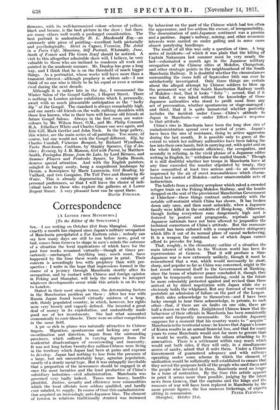Art
Mr. R. 0. Dunlop. The Goupil Gallery Salon.
THERE are few English painters to-day, still comparatively young, whose work shows such consistent improvement as does that of Mr. R. 0. Dunlop. From the time of his first one-man show in March, 1928, at the Redfern Gallery, 27 Old Bond Street, it has been abundantly clear that Mr. Dunlop has been an artist to watch. He has " gone slowly " and experimented with intelligence and extreme wariness. If at all, perhaps he has been almost a little too cautious ; but, however this may be, all the time he has been painting with enormous gusto and personal feeling. With a picture by Mr. Dunlop, the spectator must feel at once that he is faced by something which has been conceived through a great struggle —something, in fact, which is a true expression of the artist's experience. In the past Mr. Dunlop's particularly vigorous and uncompromising technique, combined with the low tones of his palette—greys, browns and earthy colours—has some- times proved too much for the content of his paintings. He has—to state my meaning more simply—frequently produced pictures which were extremely interesting to the informed student of painting but which may have appeared a little dull to the casual frequenter of picture galleries. His present exhibition—his fourth at the Redfern Gallery--leaves no doubt of his quality as a serious painter or of his sudden im- provement. Mr. Dunlop is coining out of his chrysalis. He is still faithful—with one or two exceptions—to the palette knife technique and his colour is still based on those " earthy colours " which have always been his choice, but the range of his colour is expanding. In design he is no less simple and unobtrusive than before, but his paintings are much more surely and convincingly constructed. No single work, I think, makes any sudden tremendous impression, but it would be true of the present exhibition to say that nearly all the pic- tures are interesting in themselves for their emotional qualities and not only for the interest which Mr. Dunlop's particular technique may arouse.
I feel that, judged from a pictorial standpoint, Chrysan- themums, with its well-harmonized colour scheme of yellow, black and bronze, is the best picture in the show ; but there are many others well worth a prolonged consideration. The best portrait is undoubtedly D. L. Macdonald Esq.—an extremely able piece of painting—excellent both pictorially and psychologically. Street in Cagnes, Veronica, The Artist in a Paris Cafe, Maoriora, Self Portrait, Whitstable, June, South of France and The Green Scarf should be noticed. A visit to this altogether admirable show will, I believe, be very valuable to those who are inclined to condemn all work not painted in the academic manner. Mr. Dunlop has gone a long way, and I think that he is on the threshold of much bigger things. As a portraitist, whose works will have more than a transient interest—although prophecy is seldom safe—I can think of no one who is likely to be his equal or even a serious rival during the next decade.
Although it is rather late in the day, I recommend the Winter Salon of the Goupil Gallery, 5 Regent Street. There is nothing in London picture exhibitions which I, personally, await with so much pleasurable anticipation as the " lucky dip " at the Goupil. The standard is always remarkably high, and one meets old friends on the walls rubbing shoulders with those less known, who in their turn will become old friends at future Goupil Salons. Always in the first room are water- colours by Mr. Wilson Steer, 0.M., and Mr. Philip Connard, R.A. Ethelbert White and Charles Ginner one sees again, and Eric Gill, Mark Gertler and John Nash. In the large gallery, this winter, are the main series of oil paintings. Too many, of course, but one would not wish the Goupil different. Ely, by Charles Cundall, Victorian Bouquet, by Richard Wyndham, Tucks Boat-house, Cookham, by Stanley Spencer, Cap d'An- tibes : Evening, by J. B. Manson, Girl with Parrot, by Matthew Smith, Faringdon House, from the Lake, by Lord Bemers, and Summer Flowers and Pembroke Square, by Nadia Bettor's, deserve special attention. And with the English painters, mingled in happy amity, hang a magnificent landscape by Derain, a flowerpiece by Marie Laurencin, Girl Reading, by Vuillard, and two Gaugains, The Tall Trees and Houses by the Water. This is already degenerating into a catalogue of personal preferences, so that I will leave the choice of indi- vidual taste to those who explore the galleries at 5 Lower Regent Street. A very pleasant hour can be spent there.
DAVID FINCIIAM.



































 Previous page
Previous page